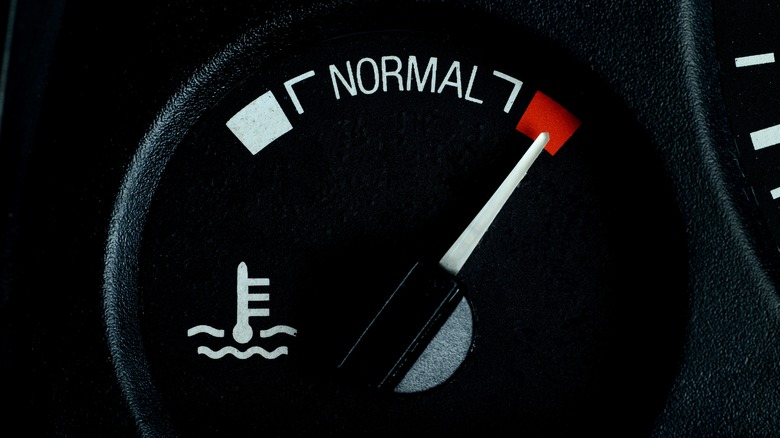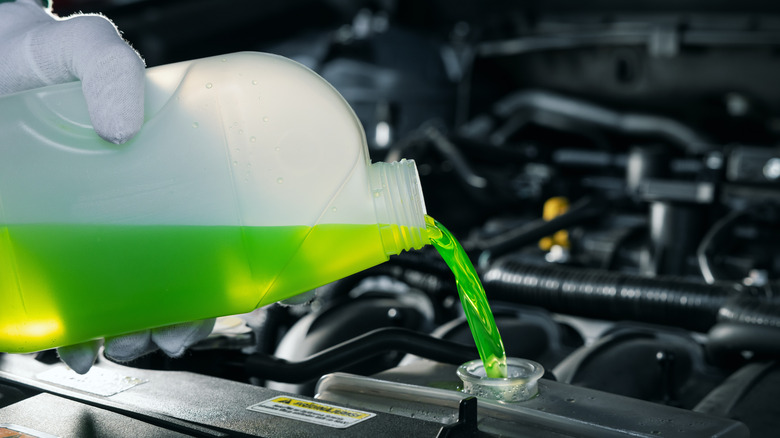In a lot of ways, modern car owners have it easy. Sure, you might burst into a fit of rage trying to disable that lane departure warning, but inconvenient trips to the mechanic for maintenance are far fewer than our parents or grandparents endured. Synthetic engine oil can easily last twice as long as old-school dead dinosaur juice. Ditto for automatic transmission fluid, which some manufacturers say can last 100,000 miles in normal use. But what about coolant, also called antifreeze in concentrated form? How long can it last and what happens if it doesn’t get changed?
Coolant is typically a 50/50 mix of water and ethylene glycol, although that ratio can vary. Compared to pure water, coolant has a higher boiling point as well as a lower freezing threshold. The coolant mixture circulates throughout an engine via a water pump to keep key components like engine blocks and cylinder heads at proper operating temperature.
In warm weather, it draws heat away from hot components, then takes a trip back through the vehicle’s radiator where it sheds heat before another pass through the engine. In cold weather, antifreeze prevents the engine coolant from freezing (duh!) which can result in catastrophic damage like a cracked engine block. Finally, engine-heated coolant is directed through a sort of mini-radiator called a heater core. When air is blown across that heater core by an electric fan, it provides warmth inside the vehicle’s interior.
Coolant prevents rust, too
So how often should you think about your car’s coolant? Most manufacturers call for it to be changed every 30,000 to 100,000 miles or three to five years, whichever comes first. Certain “extended life” coolants boast a lifespan of 160,000 miles or ten years. In extreme circumstances like frequently towing trailers, those intervals are going to be shorter. In any case, what happens if you ignore this easy-to-forget aspect of car maintenance?
Besides losing its general effectiveness to cool or prevent freezing, antifreeze grows more acidic over time. That means less ability to prevent corrosion. And by the way, corrosion is the reason why — even if your part of the world never sees freezing temperatures — you shouldn’t run plain water in your cooling system. And before we take to the comments section, yes, some race cars use straight water, but that probably isn’t you.
Coolant is a rust inhibitor that protects the water pump, radiator, thermostat, and other components from harmful scale, which are small flakes of metal oxide. Hard particles like rust and scale circulating around reduce the lifespan of moving parts like water pumps and can clog narrow passages within the cooling system. A clogged or blocked cooling system can lead to overheating and pricey parts like radiators will need replacement if the blockage from corrosion gets bad enough.
Flush out all the bad stuff
If you’re not sure whether your coolant is still fresh enough, you can either ask your mechanic to perform a coolant test or buy an inexpensive testing device yourself. It’s worth noting that coolant testers may not work as well on certain modern coolants, which have varying chemical compositions from the classic green stuff. Less scientifically, drivers will also receive a clue if a vehicle starts running hotter than usual.
When coolant is replaced, one option is to simply drain the old coolant from the radiator and replace it with fresh fluid. While perhaps better than nothing, this isn’t the preferred method. Instead, you or your mechanic should perform a coolant flush. Like the name implies, a coolant flush forces old fluid from every nook and cranny inside the engine and cooling system under pressure. Along with the old coolant, rust particles, coagulated coolant, and who knows what else will come out of the system.
Changing your coolant at proper intervals definitely isn’t the most thrilling topic among gearheads. The same folks who spend hours deliberating over what type of oil and filter to use at their next oil change probably don’t give a passing thought to the contents of their radiators. However, that logic can lead to bigger problems like prematurely worn components or damage to the engine block or cylinder head(s) from overheating.





